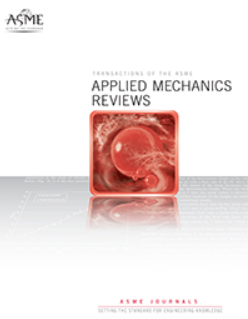基于谱正交密度泛函理论的百亿亿次晶体缺陷Ab-Initio模拟
IF 16.1
1区 工程技术
Q1 MECHANICS
引用次数: 0
摘要
晶体固体中的缺陷在决定材料在纳米、中观和宏观尺度上的性能方面起着至关重要的作用,如纳米尺度上空位的聚并形成孔洞和棱柱位错环,或溶质的扩散和偏析形成成核沉淀,磁性材料中通过无序和掺杂发生的相变。第一性原理密度泛函理论(DFT)模拟可以提供对这些现象的详细理解。然而,正确模拟这些系统所需的原子数量通常超出了许多广泛使用的DFT代码的范围。本文的目的是讨论利用光谱正交法对晶体缺陷进行第一性原理建模的最新进展。光谱正交法是相对于原子数量的线性缩放,允许空间粗粒化,并且能够模拟嵌入在体环境中的非周期系统,这允许应用适当的边界条件来模拟晶体缺陷。在本文中,我们讨论了适用于利用百亿亿级计算资源的数千原子级大型金属系统的最先进的从头算模型。本文章由计算机程序翻译,如有差异,请以英文原文为准。
Towards Ab-Initio Simulations of Crystalline Defects at the Exascale Using Spectral Quadrature Density Functional Theory
Defects in crystalline solids play a crucial role in determining properties of materials at the nano, meso- and macroscales, such as the coalescence of vacancies at the nanoscale to form voids and prismatic dislocation loops or diffusion and segregation of solutes to nucleate precipitates, phase transitions in magnetic materials via disorder and doping. First principles Density Functional Theory (DFT) simulations can provide a detailed understanding of these phenomena. However, the number of atoms needed to correctly simulate these systems is often beyond the reach of many widely used DFT codes. The aim of this article is to discuss recent advances in first principles modeling of crystal defects using the spectral quadrature method. The spectral quadrature method is linear scaling with respect to the number of atoms, permits spatial coarse-graining, and is capable of simulating non-periodic systems embedded in a bulk environment, which allows the application of appropriate boundary conditions for simulations of crystalline defects. In this article, we discuss the state-of-the-art in ab-initio modeling of large metallic systems of the order of several thousand atoms that are suitable for utilizing exascale computing resourses.
求助全文
通过发布文献求助,成功后即可免费获取论文全文。
去求助
来源期刊
CiteScore
28.20
自引率
0.70%
发文量
13
审稿时长
>12 weeks
期刊介绍:
Applied Mechanics Reviews (AMR) is an international review journal that serves as a premier venue for dissemination of material across all subdisciplines of applied mechanics and engineering science, including fluid and solid mechanics, heat transfer, dynamics and vibration, and applications.AMR provides an archival repository for state-of-the-art and retrospective survey articles and reviews of research areas and curricular developments. The journal invites commentary on research and education policy in different countries. The journal also invites original tutorial and educational material in applied mechanics targeting non-specialist audiences, including undergraduate and K-12 students.

 求助内容:
求助内容: 应助结果提醒方式:
应助结果提醒方式:


